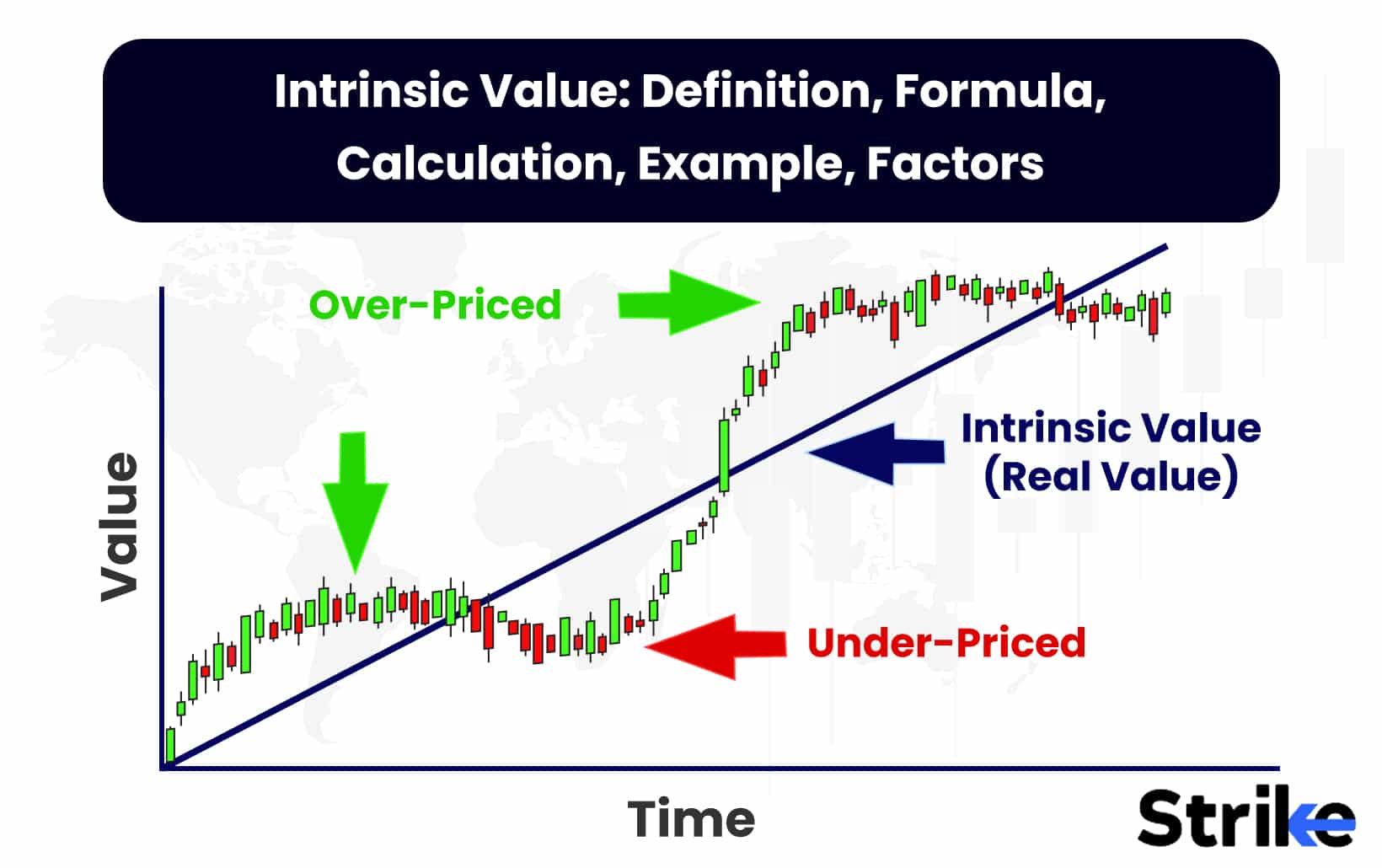
Intrinsic value is the true or fundamental worth of a company independent of short-term sentiment or price fluctuations. Intrinsic value is the true value based on qualitative attributes such as brand, research, and development (R&D), market share, growth forecasts, assets, patents and trademarks, customer base, earnings power, and advantages over the competition. It tells you what the business is really worth.
Calculating intrinsic value requires a thorough understanding of fundamental analysis, which is the process of evaluating a company’s finances, management, and competitive advantages to estimate its future cash flows and the possible risks to these cash flows. This process also uses market projections.
Determining if a stock’s current trading price aligns with its intrinsic value helps investors identify underpriced companies poised to rise. Overpriced stocks facing declines are also spotted. Three prominent valuation models – discounted cash flow, dividend discount, and residual income – provide frameworks for intrinsic value calculations.
Accurately predicting variables like profit margins and growth rates years into the future is far from exact. However, making educated assumptions allows discerning investors to see through temporary price distortions to uncover opportunities. Determining intrinsic value gives a more complete picture of a company’s prospects versus just its market valuation on any given day.
This insightful approach has long helped wise wealth managers make prudent investment choices. By accounting for financial fundamentals as well as industry, economic, and competitive contexts, determining intrinsic value equips one to distinguish sound long-term holdings from overhyped assets likely to underperform. Regular examination of true worth improves portfolio resiliency through changed times.
What is intrinsic value?
The intrinsic value of a stock is the actual value of a company or stock based on its underlying fundamentals and potential. Intrinsic value, unlike market value, which is driven by investor demand, aims to determine what a stock is truly worth by analyzing financial metrics like earnings, assets, and growth projections. To calculate intrinsic value, analysts use valuation models like discounted cash flow analysis, which estimates future free cash flows and discounts them back to the present using a required rate of return. The intrinsic value represents what a rational investor should pay for that stock today based on careful analysis rather than being swayed by market sentiment or hype.
Why should we know the intrinsic value?
We should know Intrinsic Value because it helps us make more informed investment decisions when buying and selling stocks. Intrinsic value is the actual worth of a stock based on qualitative factors, as opposed to just the current market price. Intrinsic value is a tool used to identify if a stock is a good buy when compared to the stock’s current market value. A stock is undervalued by the market and has the potential to rise if the current market price of that stock is below its intrinsic value. There are times when the market price becomes higher than the intrinsic value of a stock.
The stock is overpriced and is probably headed for a decline. Assessing the intrinsic value is an intricate process that looks at things like the company’s financials, management, competitive advantages, and growth opportunities. It is subjective, as it requires estimations, but it provides a more complete picture of a stock’s worth. Using intrinsic value, along with a few other metrics, helps you be better at picking stocks, leading to greater returns in the long run. In understanding intrinsic value, we can make more logical investment choices.
What is the formula for intrinsic value?
The formula of Intrinsic value is calculated by taking the absolute value of the difference between the current market price of the stock (S) and the strike price (K) specified in an options contract. The formula is written as IV=|S-K|, where IV represents the intrinsic value, S is the current market price, and K is the strike price. Intrinsic value represents the minimum value an option holder would get if they exercised their option immediately. The intrinsic value formula only applies to option contracts, not stocks themselves. For stocks, intrinsic value refers more broadly to the true underlying value based on financial analysis. With options, intrinsic value has a specific definition – it is the difference between the strike price and the current market price.
How do you calculate the intrinsic value of a stock?
The intrinsic value of a stock is calculated by estimating the company’s future cash flows and then discounting those cash flows back to the present using a rate that reflects the riskiness of those cash flows. There are three main models used: the Discounted Cash Flow (DCF) model, which discounts free cash flows; the Dividend Discount Model (DDM), which discounts future dividend payments; and the Residual Income Model, which estimates future book value and subtracts it from future earnings.
Discounted Cash Flow (DCF) model
The Discounted Cash Flow (DCF) model estimates the intrinsic value of a stock by downloading the company’s free cash flows to a present value through the application of the company’s future free cash flow projections. Of the forecast period. Forecasted cash flows are based on a company’s expected growth, margin development, tax rate, capital expenditures, net working capital, and just a few other items. Each of these measures is projected for a forecast period. As a result, all future banknotes are valued in present value terms. The output of the model — the net present value of forecast cash flows — is the intrinsic value of the stock. Since the DCF model uses future cash flows as a starting point and values them in present value, it provides a highly sensitive intrinsic value based on expected business performance.
Dividend Discount Model (DDM)
The Dividend Discount Model aims to calculate a stock’s intrinsic value based on the future dividends the company will pay out. It uses predicted dividend payments over a period of time, discounts them back to present value, and sums them together. The formula is Intrinsic Value = Sum of Present Value of Dividends + Present Value of Stock Sales Price. The model assumes dividends represent the true cash flows shareholders will receive. It also assumes a constant dividend growth rate and a required rate of return as inputs. By discounting estimated future dividends, the Dividend Discount Model provides an intrinsic value estimate based on expected shareholder payouts.
Residual Income Model
The Residual Income Model aims to determine a stock’s intrinsic value based on book value and future residual income estimates. It starts with the current book value per share and then adds the present value of projected residual income per share over a forecast period. Residual income is net income minus a capital charge on the book value. The formula is Intrinsic Value = Current BV + PV of Residual Income. By accounting for current assets and expected excess returns, the Residual Income Model provides an intrinsic value estimate incorporating both present and future expected performance. Conceptually, intrinsic value equals current book value plus the discounted residual income shareholders expect to receive.
By estimating future cash flows, dividends, or residual income and discounting them to present value, the intrinsic value of a stock is calculated using discounted cash flow, dividend discount, or residual income valuation models.
What is an example of intrinsic value calculation?
Let’s consider an Indian IT services firm, Infosys. Infosys has grown its earnings by 15% annually over the last 5 years. Another major Indian IT company, TCS, currently trades at a price-to-earnings ratio of 20x. TCS and Infosys operate in the same industry and have similar business models. Given that Infosys is projected to earn Rs. 100 per share next year, we will be able to value it using TCS’s P/E ratio as a benchmark. By applying TCS’s 20x multiple to Infosys’ expected earnings per share of Rs. 100, we get an intrinsic value estimate of Rs. 2,000 per share for Infosys (20 x Rs. 100 EPS).
This implies that based on fundamentals and comparables, Infosys’ fair value should be around Rs. 2,000 per share. However, Infosys is currently trading at Rs. 1,500, which is 25% below our estimate of intrinsic value. Therefore, Infosys is sometimes undervalued relative to its peers. This is one way to calculate the intrinsic value of Infosys shares by looking at projected earnings and applying a comparable company’s earnings multiple.
What factors can affect intrinsic value?
Stock analysis is crucial to assess its intrinsic value, which is shaped by a multitude of factors. These factors range from company-specific aspects, like financial performance, competitive advantages, and management expertise, to broader market and economic influences such as industry growth trends, interest rates, and economic cycles. Additionally, the intrinsic value is also affected by other external factors, including regulatory changes, technological disruptions, and geopolitical events. This comprehensive analysis helps in understanding the true worth of a stock, beyond just its current market price.
Company-Specific Factors
Financial performance is a major element, as robust cash flows and earnings growth drive up valuations. Firms with sustained earnings growth often make good use of their capital. Quality of management is an area to watch, as effective leaders who make insightful decisions are likely to continue creating value for shareholders. Companies with strong positions that lead to above-average returns on capital are particularly interesting among their expensive, wide-moat brethren.
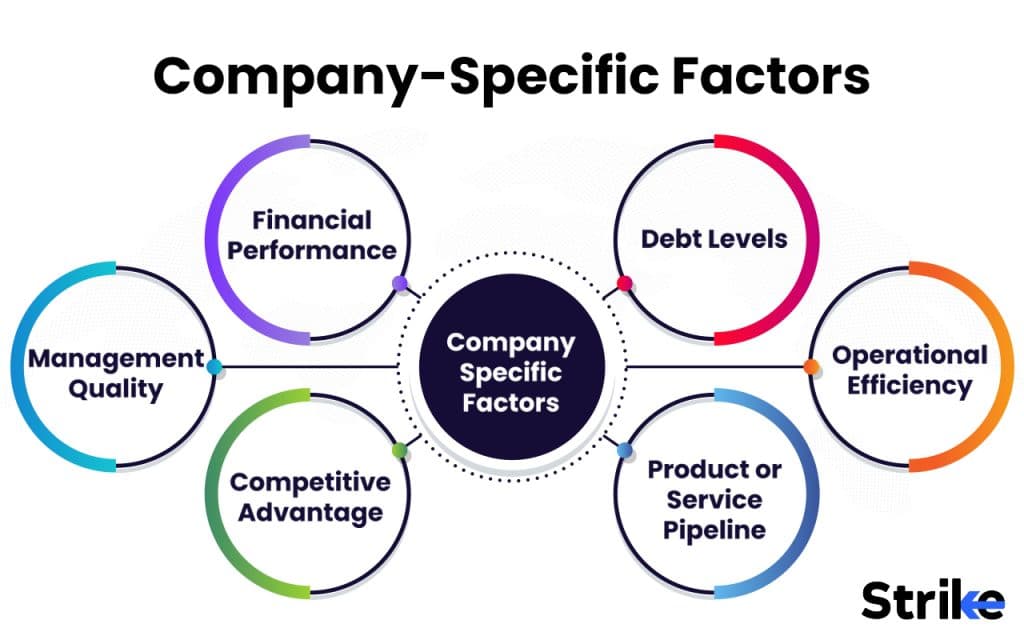
Strong operational spending helps fatten margins and free up cash flows to invest, and few companies are as lean and low-cost as these, typically. We view firms with visible growth drivers as particularly appealing, as innovative offerings coming to market help a firm bolster its top line. In summation, the most valuable firms across the broad market boast robust financials underpinned by leading management teams whose actions drive industry-leading returns. Those managers have strategic advantages that competitors cannot replicate, and they have efficient operations, which buy the labor and capital needed to embed those competitive advantages in future cost structures.
Market and Economic Factors
Interest rates impact valuations, as higher rates decrease the present value of future cash flows. Strong economic conditions increase consumer spending and business investment, boosting earnings. Weak economic conditions have the opposite effect. Industry trends influence specific sectors and companies. Fast-growing industries see rising valuations. Declining industries face multiple contractions. Market sentiment sometimes produces mispricing. Over-optimism inflates valuations beyond reason. Pessimism sometimes depresses prices below fair value.
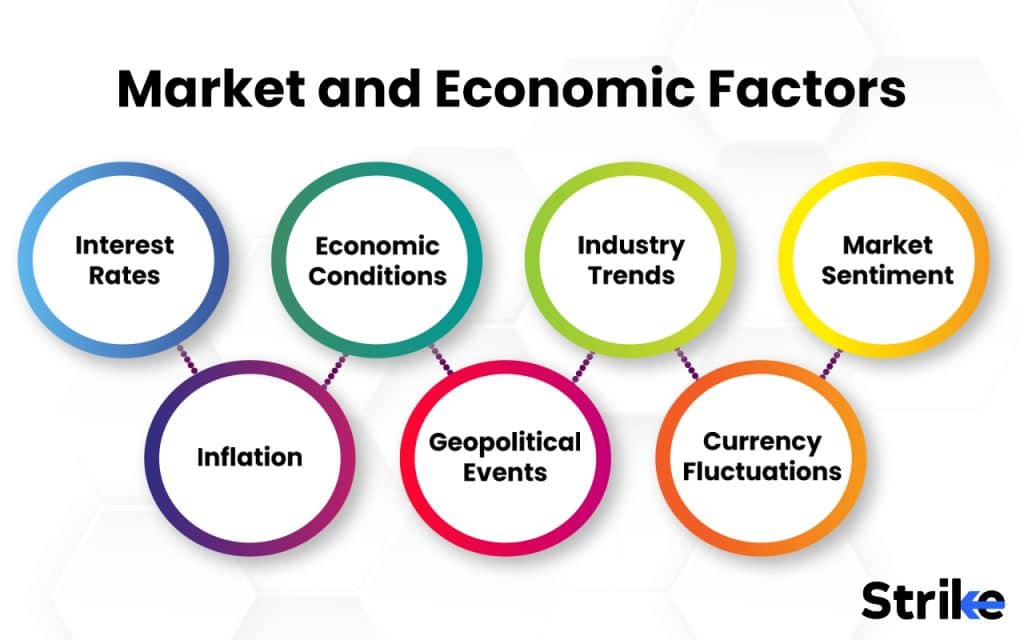
Inflation lowers real returns, putting downward pressure on valuations. Low inflation allows higher multiples. Geopolitical events introduce uncertainty, increasing risk premiums. Trade wars and tariffs impact global companies. Currency fluctuations affect multinational profits and competitiveness. A strong dollar lowers the value of overseas revenues. These macroeconomic aspects need to be taken into account when determining intrinsic value. Changes in interest rates, economic growth, industry conditions, market psychology, inflation, global stability, and exchange rates all impact the valuation investors attach to future earnings.
Other Factors
Regulatory changes present risks and opportunities for companies. New regulations raise costs but also create competitive advantages for compliant firms. Technological disruption impacts entire industries. New innovations lower valuations for companies relying on old business models. Environmental and social factors matter more to today’s investors. Firms perceived as unethical or unsustainable face valuation headwinds. Demographic shifts alter consumer demand. An aging population favors healthcare and retirement-related industries. Investors also need to take all of these factors into account when determining intrinsic value.
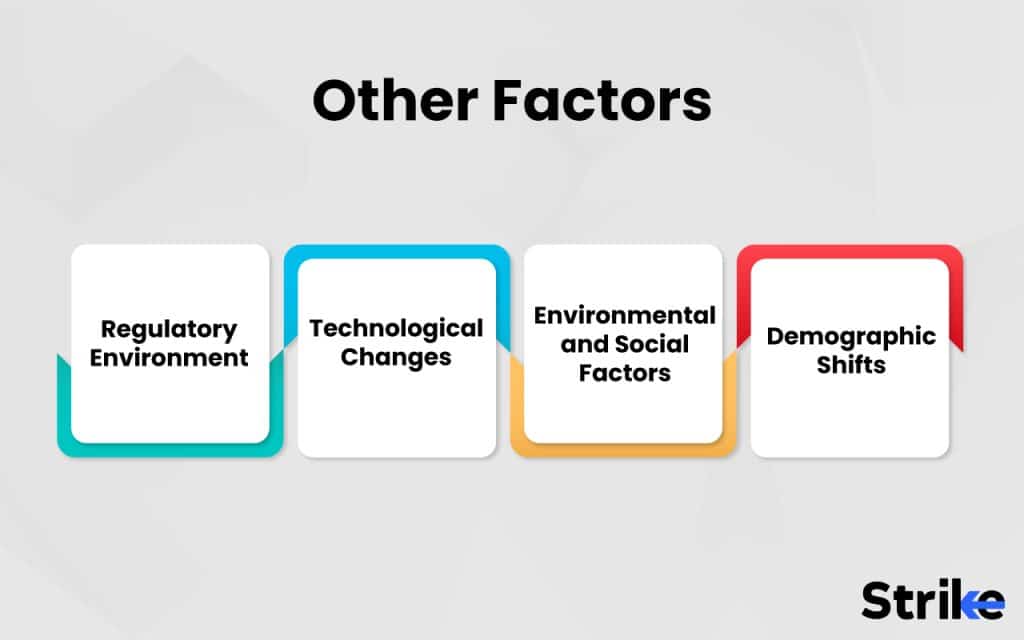
A difficult regulatory environment lowers expected returns for a company. Disruptive technology makes once-dominant firms obsolete. Bad publicity around social issues damages the brand image and growth prospects. Demographic tailwinds provide modest boosts to affected sectors. Other vital influences include corporate governance, shareholder structure, legal liabilities, and labor relations. A well-governed company that treats employees fairly holds intrinsic value advantages. Evaluating exposure to regulatory, technological, social, demographic, and governance factors provides a comprehensive view of risks and opportunities affecting intrinsic value.
At the company level, financial performance, management competence, competitive edge, leverage, operational excellence, and future growth prospects all contribute to valuation.
What is the difference between intrinsic value & extrinsic value?
The main difference between intrinsic value and extrinsic value is that intrinsic value represents the inherent worth of a business, while extrinsic value represents outside factors that affect a stock’s price. A company’s intrinsic value derives from financials like earnings, assets, and growth potential that determine what the business is truly worth.
Extrinsic value comes from external forces like investor sentiment, media hype, and macroeconomic conditions that influence a stock’s price regardless of the company’s actual performance. While intrinsic value aims to measure a business’s objective financial merit, extrinsic value accounts for more subjective external pressures on a stock’s price. Intrinsic value depends on a company’s fundamentals, while extrinsic value depends on outside market psychology, so both are important in analyzing whether a stock is over or undervalued.
What is the difference between intrinsic value and instrumental value?
The main difference between intrinsic value and instrumental value is that intrinsic value represents the inherent worth of a company, while instrumental value represents the value derived from owning shares of a company’s stock. The intrinsic value of a company is how much it is really worth, which for a business is all the financial factors that determine what a business is worth, such as earnings, assets, and growth potential. Intrinsic value is an objective measure of a business’s financial merit.
Instrumental value is how well a company operates and the value that it provides to the shareholder, which is the benefits of owning shares in a company – including dividend payments and potential stock price appreciation. Instrumental value is a subjective measure of the value of not a business but of owning a stock. For long-term investors, intrinsic value is more important as it is an indicator of whether a stock is really over/undervalued. However, instrumental value remains important because of the short-term returns for dividends and trading profits.
What is the difference between intrinsic value & market value?
The main difference between intrinsic value and market value is that intrinsic value represents what a business is actually worth, while market value represents what investors are willing to pay for a stock. The intrinsic value of a company is calculated using financial factors such as earnings, assets, growth rates, and debt levels that reflect the true worth of the business as a whole. Market value is simply the current stock price, which is determined by supply and demand as buyers and sellers trade shares on exchanges. While intrinsic value is an estimate of a company’s objective worth, market value is a company’s current worth.
Sometimes, this is more or less than a company’s intrinsic value. As a result, market value tends to be more volatile, especially in the short term, since it represents investor opinion and sentiment and not necessarily company fundamentals. It fluctuates based on market psychology, the news, and, of course, investor behavior. Over the longer term, market value, like it or not, will converge with intrinsic value as temporary distortions are corrected and fundamentals reassert themselves. While market value tells you what investors are willing to pay for a company, given its future prospects, intrinsic value tells you what a business is worth for the long-term investment.







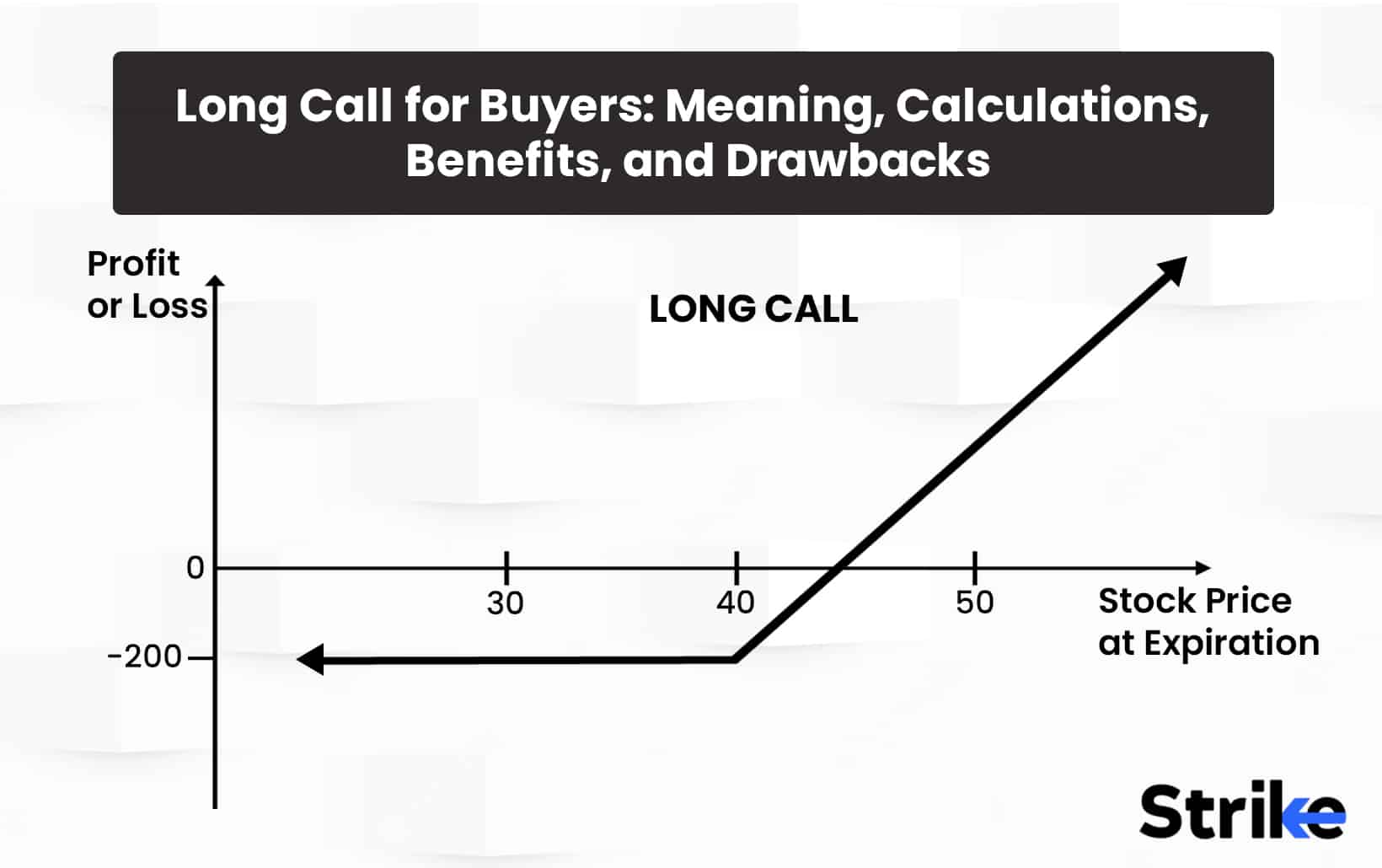
![85 Common Stock Market Terminologies for Dummies [Updated List for 2025] 40 85 Common Stock Market Terminologies for Dummies [Updated List for 2025]](https://www.strike.money/wp-content/uploads/2025/04/Popular-Stock-Market-Terms-for-Beginners-Banner.png)











No Comments Yet.